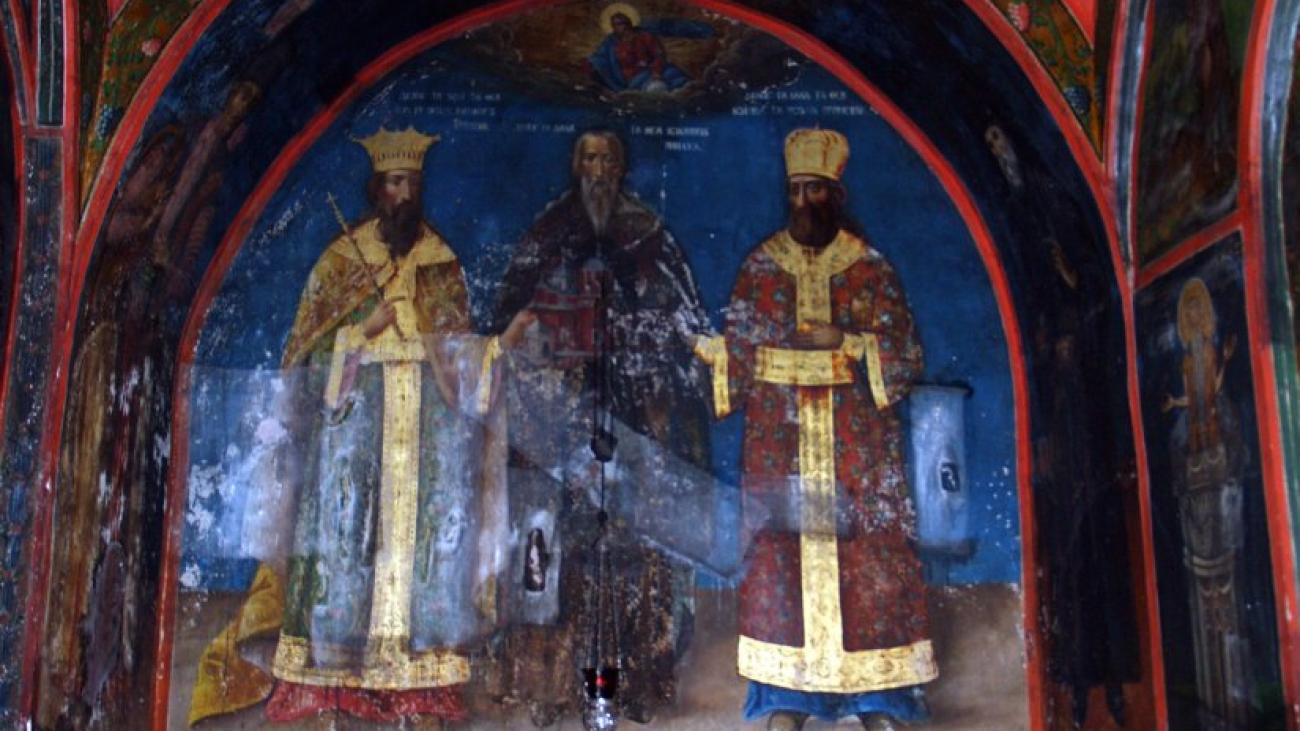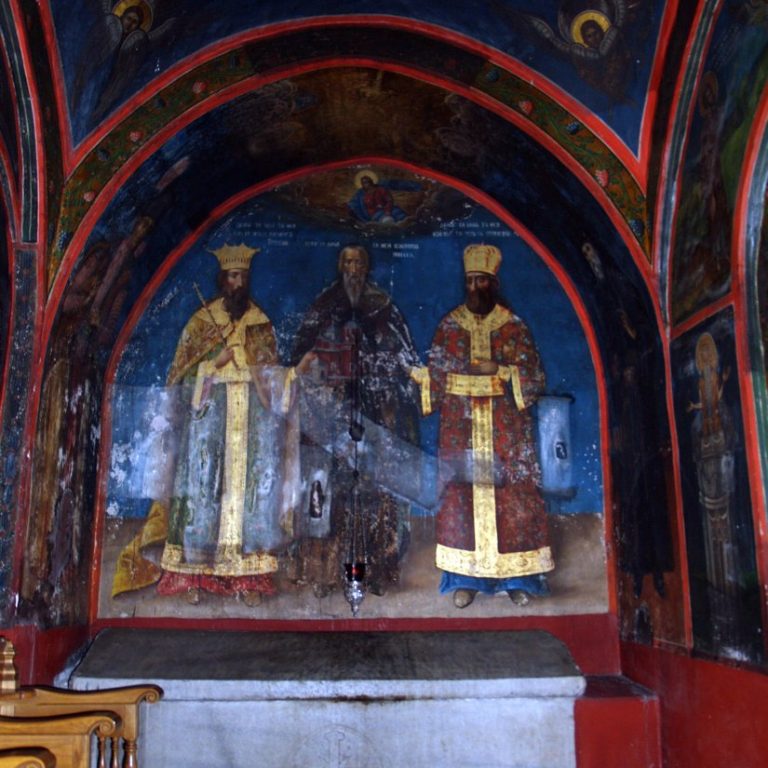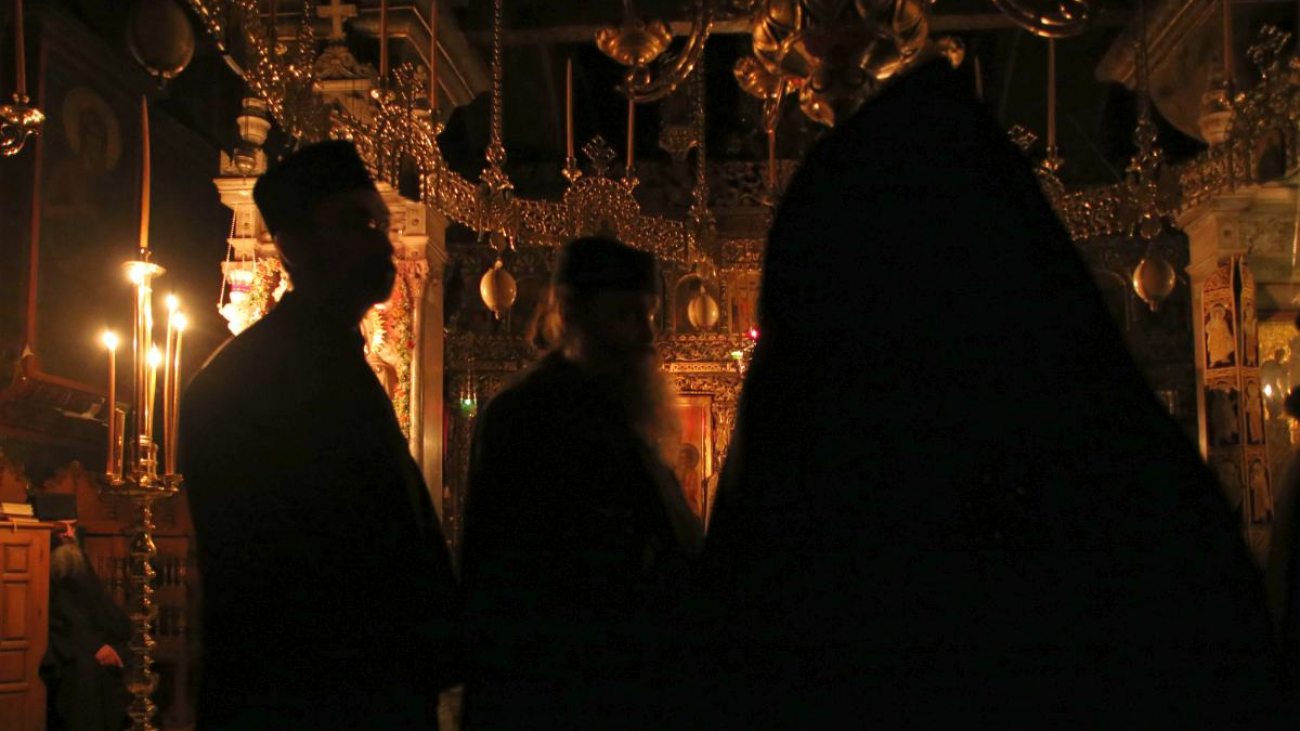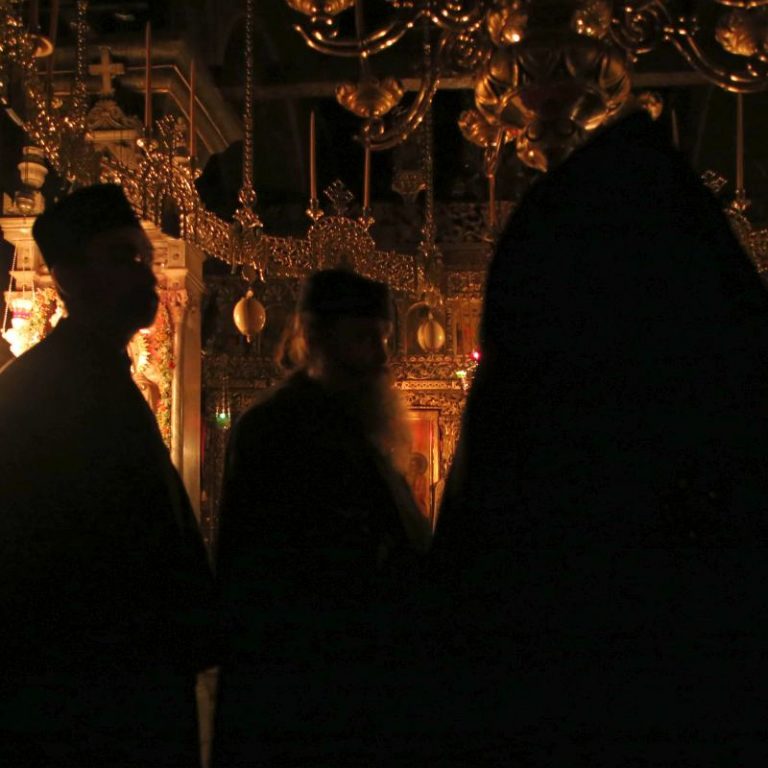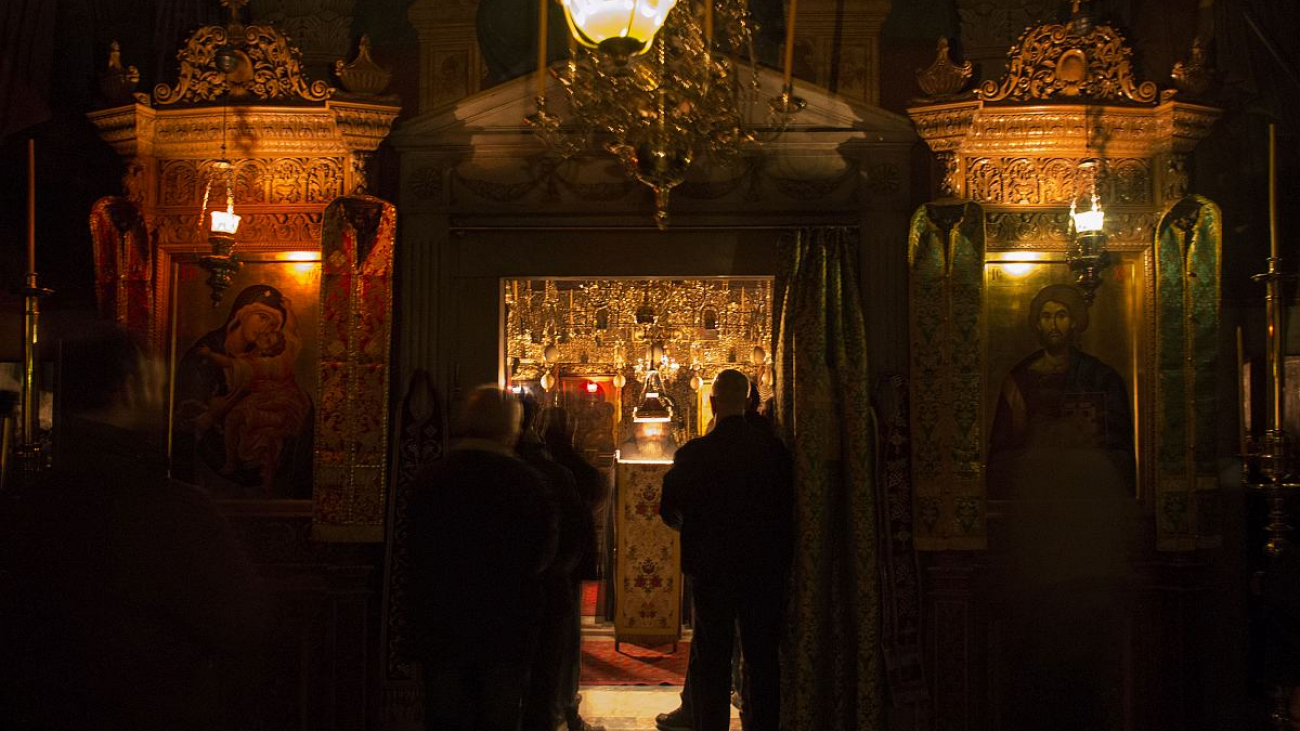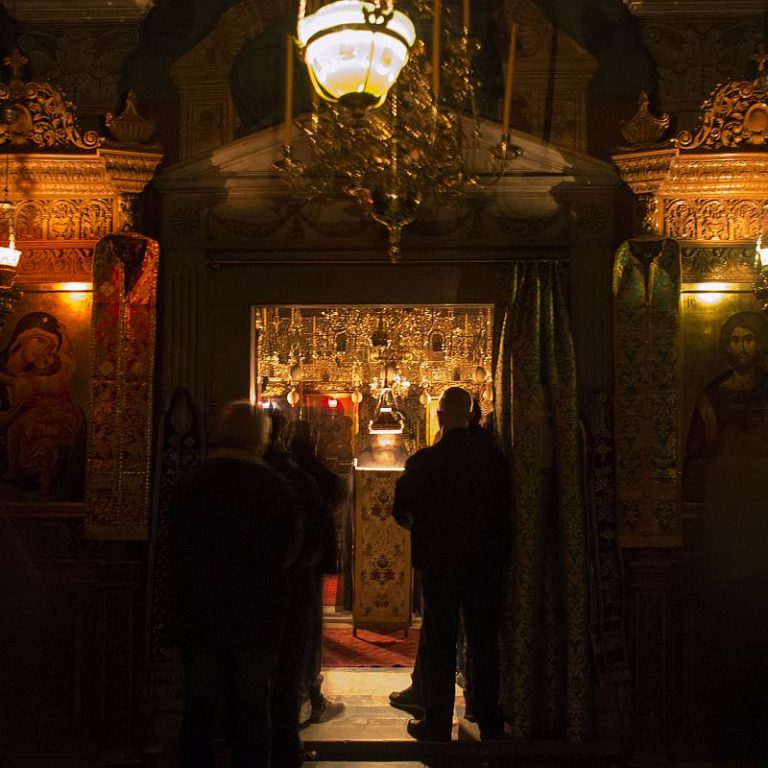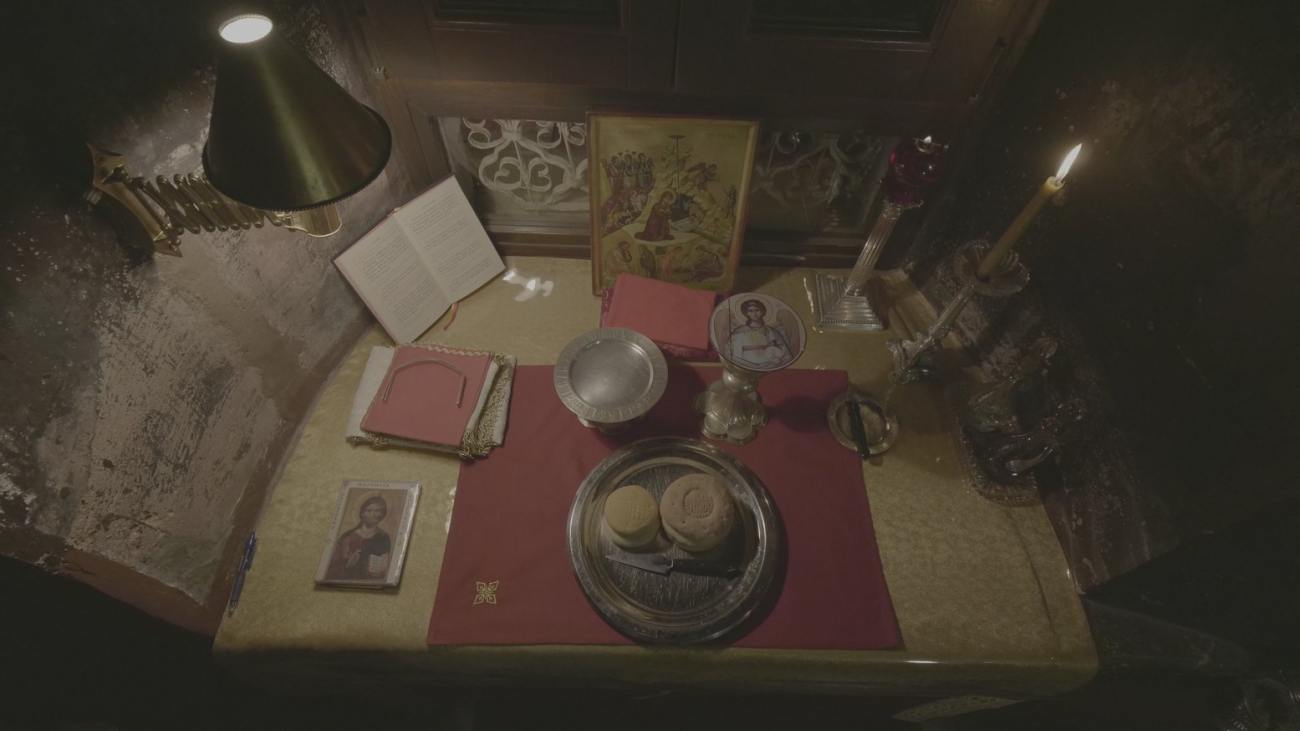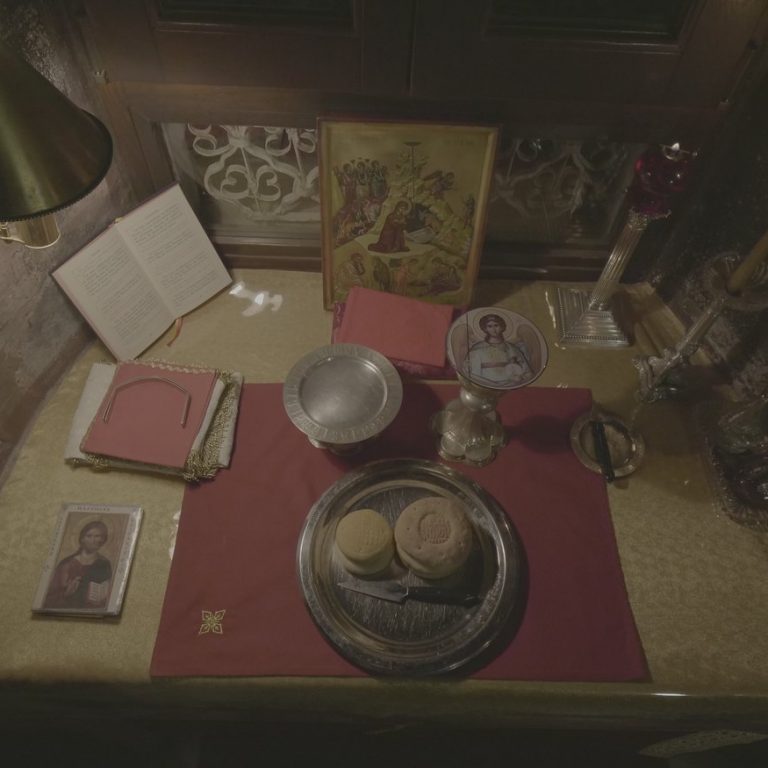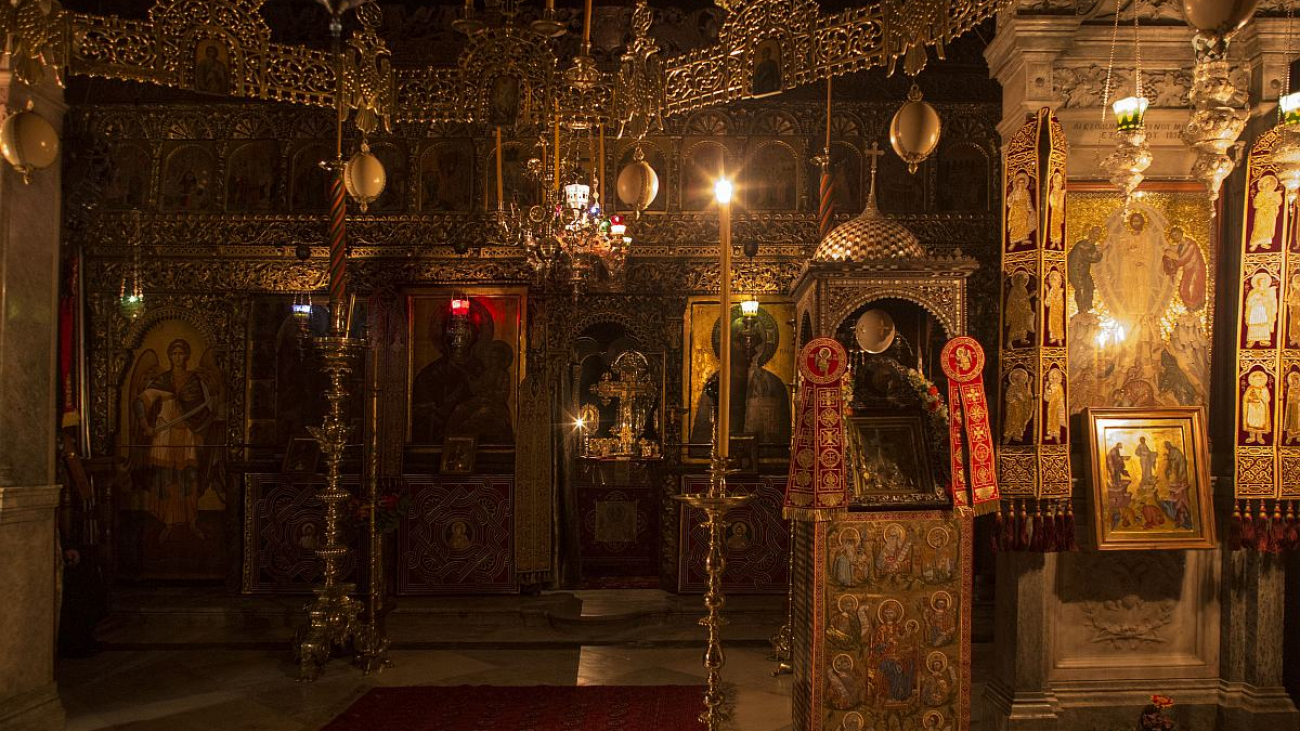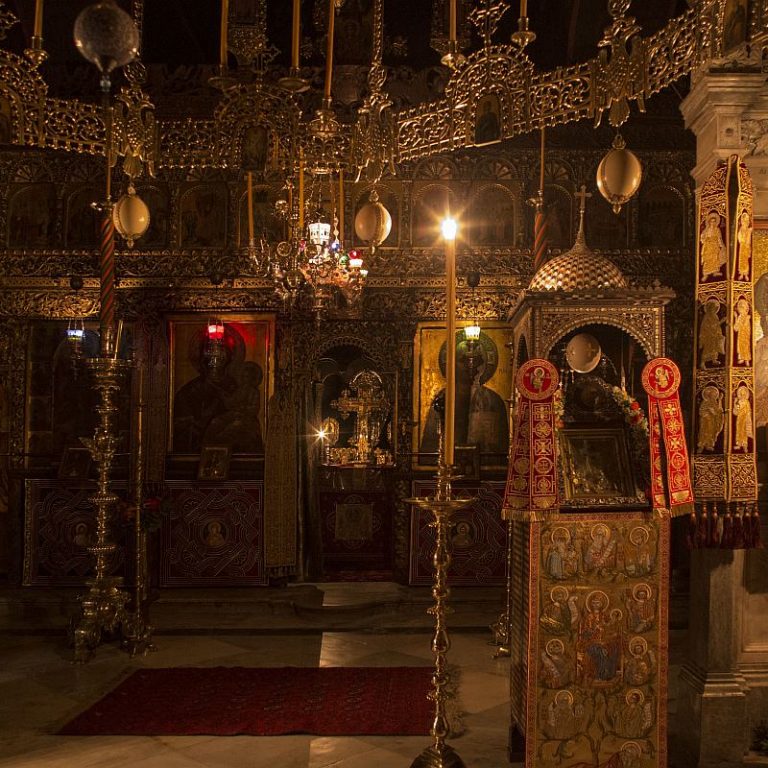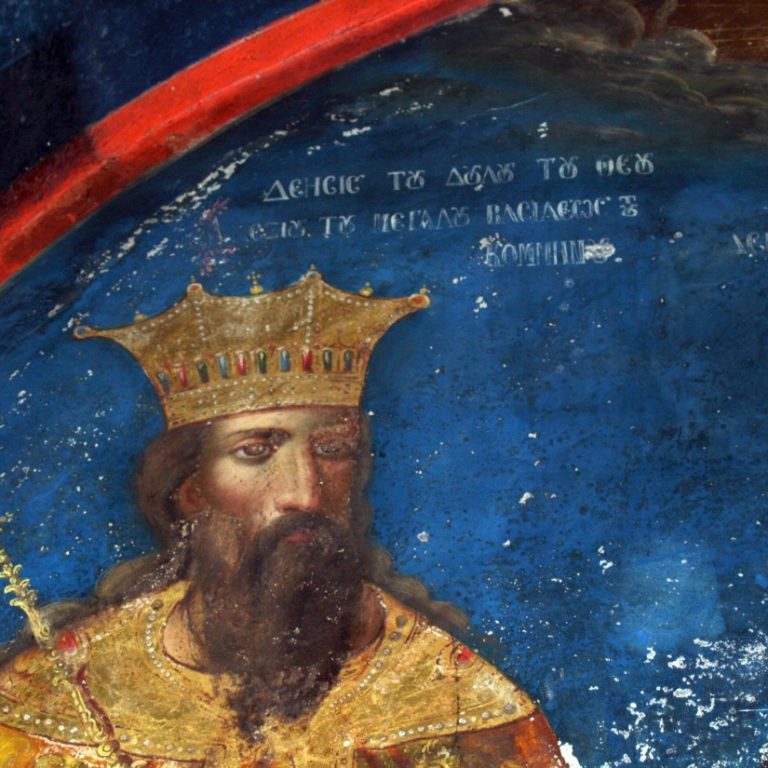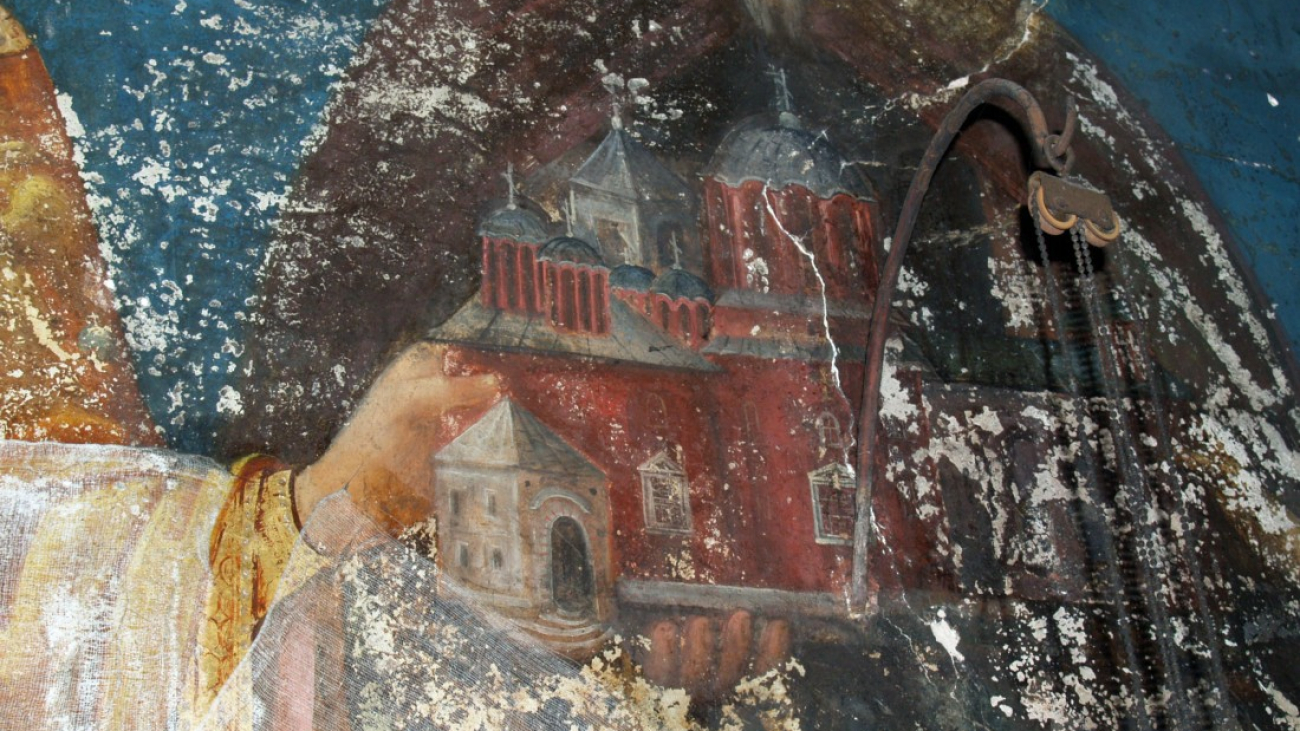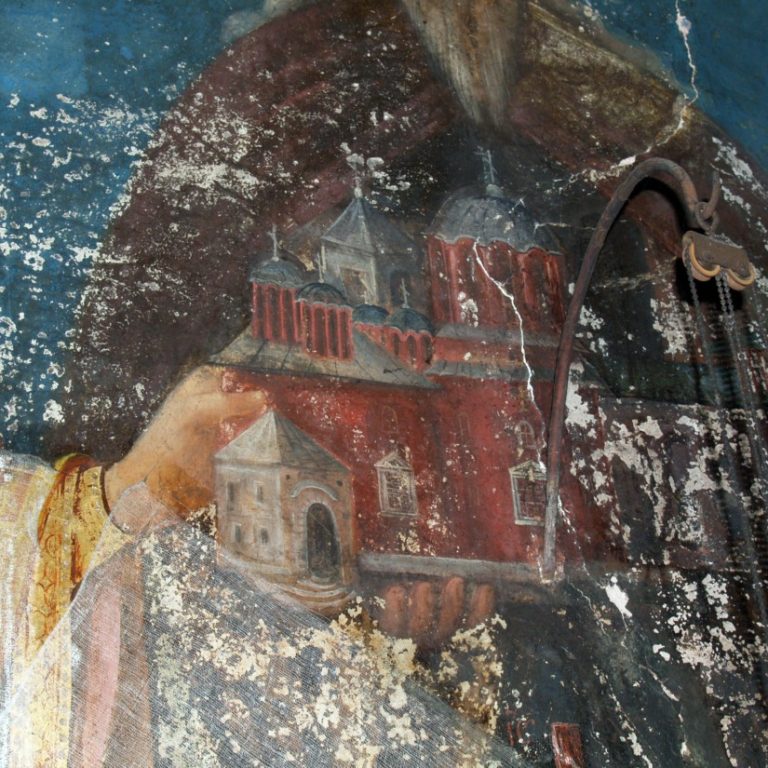The Tomb Of The Founders
Apart from the ancient chapel of the Dormition, the existence of the so-called Tomb of the Founders at the north wall is also significant. It was moved there in 1847, formerly being located in the chapel of the Three Heirarchs. According to Gerasimos Smyrnakis, although the tomb is a cenotaph, it does contain skeletal remains of 'not only large-, but also small-sized bodies,' a fact that leads to the conclusion that it might be the family tomb of the founders. The pseudo-sarcophagus decorated with crosses, birds, and trees which was placed in the Tomb dates to the 14th century, and is found today on the balcony at the entrance to the tower.
More recent decorations are depicted on the Tomb itself, dating to the period of the repainting of the frescoes in the cathedral. According to Porfurio Ouspensky who visted the Monastery in 1846 (i.e. prior to the renovations of 1847) and in 1859 (when the repainting of the Cathedral was carried out by the well-known painter Mathaios Ioannos), three inscriptions above the tomb are repeated, but with several differences from the inscriptions that were above the Tomb of the Founders when that was still located within the chapel. It is worth noting that these refer to the actual identity of the founder Alexios and do not connect his person with the Emperor Alexios Comninos, while, however, mentioning the two brothers' roles as founders.
More recent decorations are depicted on the Tomb itself, dating to the period of the repainting of the frescoes in the cathedral. According to Porfurio Ouspensky who visted the Monastery in 1846 (i.e. prior to the renovations of 1847) and in 1859 (when the repainting of the Cathedral was carried out by the well-known painter Mathaios Ioannos), three inscriptions above the tomb are repeated, but with several differences from the inscriptions that were above the Tomb of the Founders when that was still located within the chapel. It is worth noting that these refer to the actual identity of the founder Alexios and do not connect his person with the Emperor Alexios Comninos, while, however, mentioning the two brothers' roles as founders.

